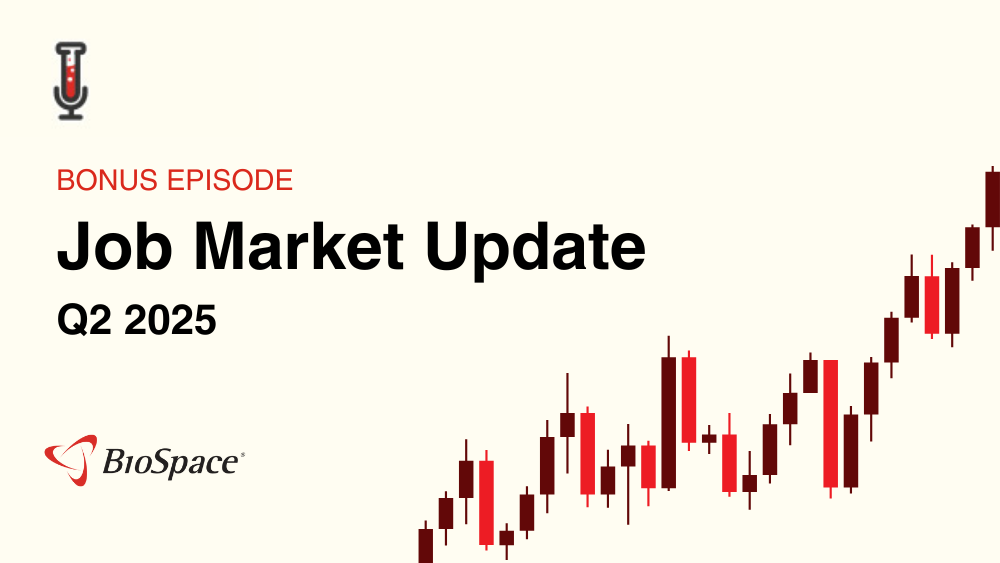Economic activity in the manufacturing sector contracted in September, and the overall economy grew for the 125th consecutive month, say the nation’s supply executives in the latest Manufacturing ISM® Report On Business®.
|
TEMPE, Ariz., Oct. 1, 2019 /PRNewswire/ -- Economic activity in the manufacturing sector contracted in September, and the overall economy grew for the 125th consecutive month, say the nation's supply executives in the latest Manufacturing ISM® Report On Business®. The report was issued today by Timothy R. Fiore, CPSM, C.P.M., Chair of the Institute for Supply Management® (ISM®) Manufacturing Business Survey Committee: "The September PMI® registered 47.8 percent, a decrease of 1.3 percentage points from the August reading of 49.1 percent. The New Orders Index registered 47.3 percent, an increase of 0.1 percentage point from the August reading of 47.2 percent. The Production Index registered 47.3 percent, a 2.2-percentage point decrease compared to the August reading of 49.5 percent. The Employment Index registered 46.3 percent, a decrease of 1.1 percentage points from the August reading of 47.4 percent. The Supplier Deliveries Index registered 51.1 percent, a 0.3-percentage point decrease from the August reading of 51.4 percent. The Inventories Index registered 46.9 percent, a decrease of 3 percentage points from the August reading of 49.9 percent. The Prices Index registered 49.7 percent, a 3.7-percentage point increase from the August reading of 46 percent. The New Export Orders Index registered 41 percent, a 2.3-percentage point decrease from the August reading of 43.3 percent. The Imports Index registered 48.1 percent, a 2.1-percentage point increase from the August reading of 46 percent. "Comments from the panel reflect a continuing decrease in business confidence. September was the second consecutive month of PMI® contraction, at a faster rate compared to August. Demand contracted, with the New Orders Index contracting at August levels, the Customers' Inventories Index moving toward 'about right' territory and the Backlog of Orders Index contracting for the fifth straight month (and at a faster rate). The New Export Orders Index continued to contract strongly, a negative impact on the New Orders Index. Consumption (measured by the Production and Employment indexes) contracted at faster rates, again primarily driven by a lack of demand, contributing negative numbers (a combined 3.3-percentage point decrease) to the PMI® calculation. Inputs — expressed as supplier deliveries, inventories and imports — were again lower in September, due to inventory tightening for the fourth straight month. This resulted in a combined 3.3-percentage point decline in the Supplier Deliveries and Inventories indexes. Imports contraction slowed. Overall, inputs indicate (1) supply chains are meeting demand and (2) companies are continuing to closely match inventories to new orders. Prices decreased for the fourth consecutive month, but at a slower rate. "Global trade remains the most significant issue, as demonstrated by the contraction in new export orders that began in July 2019. Overall, sentiment this month remains cautious regarding near-term growth," says Fiore. Of the 18 manufacturing industries, three reported growth in September: Miscellaneous Manufacturing; Food, Beverage & Tobacco Products; and Chemical Products. The 15 industries reporting contraction in September — in the following order — are: Apparel, Leather & Allied Products; Printing & Related Support Activities; Wood Products; Electrical Equipment, Appliances & Components; Textile Mills; Paper Products; Fabricated Metal Products; Plastics & Rubber Products; Petroleum & Coal Products; Primary Metals; Transportation Equipment; Nonmetallic Mineral Products; Machinery; Furniture & Related Products; and Computer & Electronic Products. WHAT RESPONDENTS ARE SAYING
Manufacturing ISM® Report On Business® data is seasonally adjusted for the New Orders, Production, Employment and Supplier Deliveries Indexes. COMMODITIES REPORTED UP/DOWN IN PRICE AND IN SHORT SUPPLY Commodities Up in Price Commodities Down in Price Commodities in Short Supply Note: The number of consecutive months the commodity is listed is indicated after each item. SEPTEMBER 2019 MANUFACTURING INDEX SUMMARIES PMI® A PMI® above 42.9 percent, over a period of time, generally indicates an expansion of the overall economy. Therefore, the September PMI® indicates growth for the 125th consecutive month in the overall economy, and the second month of contraction following 35 straight months of growth in the manufacturing sector. "The past relationship between the PMI® and the overall economy indicates that the PMI® for September (47.8 percent) corresponds to a 1.5-percent increase in real gross domestic product (GDP) on an annualized basis," says Fiore. THE LAST 12 MONTHS
New Orders Of 18 manufacturing industries, three reported growth in new orders in September: Miscellaneous Manufacturing; Food, Beverage & Tobacco Products; and Chemical Products. The 11 industries reporting a decline in new orders in September — in the following order — are: Apparel, Leather & Allied Products; Textile Mills; Wood Products; Electrical Equipment, Appliances & Components; Nonmetallic Mineral Products; Petroleum & Coal Products; Transportation Equipment; Paper Products; Computer & Electronic Products; Fabricated Metal Products; and Plastics & Rubber Products.
Production The three industries reporting growth in production during the month of September are: Chemical Products; Computer & Electronic Products; and Miscellaneous Manufacturing. The 11 industries reporting a decrease in production in September — listed in order — are: Apparel, Leather & Allied Products; Wood Products; Textile Mills; Petroleum & Coal Products; Nonmetallic Mineral Products; Primary Metals; Paper Products; Machinery; Plastics & Rubber Products; Electrical Equipment, Appliances & Components; and Fabricated Metal Products.
Employment Of 18 manufacturing industries, four reported employment growth in September: Miscellaneous Manufacturing; Textile Mills; Food, Beverage & Tobacco Products; and Chemical Products. The 11 industries reporting a decrease in employment in September, in the following order, are: Printing & Related Support Activities; Apparel, Leather & Allied Products; Primary Metals; Paper Products; Wood Products; Fabricated Metal Products; Electrical Equipment, Appliances & Components; Transportation Equipment; Plastics & Rubber Products; Computer & Electronic Products; and Machinery.
Supplier Deliveries The nine industries reporting slower supplier deliveries in September — listed in order — are: Textile Mills; Food, Beverage & Tobacco Products; Miscellaneous Manufacturing; Primary Metals; Paper Products; Computer & Electronic Products; Plastics & Rubber Products; Machinery; and Chemical Products. The five industries reporting faster supplier deliveries in September are: Electrical Equipment, Appliances & Components; Nonmetallic Mineral Products; Furniture & Related Products; Fabricated Metal Products; and Transportation Equipment.
Inventories* The four industries reporting higher inventories in September are: Nonmetallic Mineral Products; Wood Products; Primary Metals; and Chemical Products. The 10 industries reporting a decrease in inventories in September — in the following order — are: Apparel, Leather & Allied Products; Printing & Related Support Activities; Plastics & Rubber Products; Textile Mills; Fabricated Metal Products; Computer & Electronic Products; Paper Products; Machinery; Miscellaneous Manufacturing; and Electrical Equipment, Appliances & Components.
Customers' Inventories* The five industries reporting customers' inventories as too high during the month of September are: Nonmetallic Mineral Products; Textile Mills; Miscellaneous Manufacturing; Electrical Equipment, Appliances & Components; and Fabricated Metal Products. The nine industries reporting customers' inventories as too low during September — listed in order — are: Wood Products; Petroleum & Coal Products; Plastics & Rubber Products; Primary Metals; Chemical Products; Transportation Equipment; Machinery; Computer & Electronic Products; and Food, Beverage & Tobacco Products.
Prices* Five of the 18 industries reported paying increased prices for raw materials in September: Petroleum & Coal Products; Textile Mills; Miscellaneous Manufacturing; Food, Beverage & Tobacco Products; and Computer & Electronic Products. The 12 industries reporting a decrease in prices for raw materials in September — listed in the following order — are: Apparel, Leather & Allied Products; Furniture & Related Products; Paper Products; Wood Products; Fabricated Metal Products; Nonmetallic Mineral Products; Plastics & Rubber Products; Primary Metals; Chemical Products; Machinery; Electrical Equipment, Appliances & Components; and Transportation Equipment.
Backlog of Orders* None of the 18 industries reported growth in order backlogs in September. The 11 industries reporting a decrease in order backlogs during September — listed in order — are: Apparel, Leather & Allied Products; Textile Mills; Electrical Equipment, Appliances & Components; Wood Products; Furniture & Related Products; Transportation Equipment; Computer & Electronic Products; Primary Metals; Chemical Products; Machinery; and Fabricated Metal Products. Seven industries reported no change in order backlogs in September as compared to August.
New Export Orders* The two industries reporting growth in new export orders in September are: Food, Beverage & Tobacco Products; and Miscellaneous Manufacturing. The 11 industries reporting a decrease in new export orders in September — listed in order — are: Apparel, Leather & Allied Products; Petroleum & Coal Products; Textile Mills; Fabricated Metal Products; Nonmetallic Mineral Products; Computer & Electronic Products; Transportation Equipment; Plastics & Rubber Products; Paper Products; Machinery; and Chemical Products.
Imports* The two industries reporting growth in imports during the month of September are: Petroleum & Coal Products; and Nonmetallic Mineral Products. The 11 industries reporting a decrease in imports in September — in the following order — are: Apparel, Leather & Allied Products; Paper Products; Plastics & Rubber Products; Electrical Equipment, Appliances & Components; Fabricated Metal Products; Computer & Electronic Products; Miscellaneous Manufacturing; Machinery; Transportation Equipment; Chemical Products; and Food, Beverage & Tobacco Products.
*The Inventories, Customers' Inventories, Prices, Backlog of Orders, New Export Orders and Imports Indexes do not meet the accepted criteria for seasonal adjustments. Buying Policy Percent Reporting
About This Report The data presented herein is obtained from a survey of manufacturing supply executives based on information they have collected within their respective organizations. ISM® makes no representation, other than that stated within this release, regarding the individual company data collection procedures. The data should be compared to all other economic data sources when used in decision-making. Data and Method of Presentation Survey responses reflect the change, if any, in the current month compared to the previous month. For each of the indicators measured (New Orders, Backlog of Orders, New Export Orders, Imports, Production, Supplier Deliveries, Inventories, Customers' Inventories, Employment and Prices), this report shows the percentage reporting each response, the net difference between the number of responses in the positive economic direction (higher, better and slower for Supplier Deliveries) and the negative economic direction (lower, worse and faster for Supplier Deliveries), and the diffusion index. Responses are raw data and are never changed. The diffusion index includes the percent of positive responses plus one-half of those responding the same (considered positive). The resulting single index number for those meeting the criteria for seasonal adjustments (PMI®, New Orders, Production, Employment and Supplier Deliveries) is then seasonally adjusted to allow for the effects of repetitive intra-year variations resulting primarily from normal differences in weather conditions, various institutional arrangements, and differences attributable to non-moveable holidays. All seasonal adjustment factors are subject annually to relatively minor changes when conditions warrant them. The PMI® is a composite index based on the diffusion indexes of five of the indexes with equal weights: New Orders (seasonally adjusted), Production (seasonally adjusted), Employment (seasonally adjusted), Supplier Deliveries (seasonally adjusted), and Inventories. Diffusion indexes have the properties of leading indicators and are convenient summary measures showing the prevailing direction of change and the scope of change. A PMI® reading above 50 percent indicates that the manufacturing economy is generally expanding; below 50 percent indicates that it is generally declining. A PMI® above 42.9 percent, over a period of time, indicates that the overall economy, or gross domestic product (GDP), is generally expanding; below 42.9 percent, it is generally declining. The distance from 50 percent or 42.9 percent is indicative of the extent of the expansion or decline. With some of the indicators within this report, ISM® has indicated the departure point between expansion and decline of comparable government series, as determined by regression analysis. The Manufacturing ISM® Report On Business® survey is sent out to Manufacturing Business Survey Committee respondents the first part of each month. Respondents are asked to ONLY report on information for the current month. ISM® receives survey responses throughout most of any given month, with the majority of respondents generally waiting until late in the month to submit responses in order to give the most accurate picture of current business activity. ISM® then compiles the report for release on the first business day of the following month. The industries reporting growth, as indicated in the Manufacturing ISM® Report On Business® monthly report, are listed in the order of most growth to least growth. For the industries reporting contraction or decreases, those are listed in the order of the highest level of contraction/decrease to the least level of contraction/decrease. Responses to Buying Policy reflect the percent reporting the current month's lead time, the approximate weighted number of days ahead for which commitments are made for Capital Expenditures; Production Materials; and Maintenance, Repair and Operating (MRO) Supplies, expressed as hand-to-mouth (five days), 30 days, 60 days, 90 days, six months (180 days), a year or more (360 days), and the weighted average number of days. These responses are raw data, never revised, and not seasonally adjusted since there is no significant seasonal pattern. ISM ROB Content Except as explicitly and expressly permitted by ISM, you are strictly prohibited from creating works or materials (including but not limited to tables, charts, data streams, time-series variables, fonts, icons, link buttons, wallpaper, desktop themes, online postcards, montages, mashups and similar videos, greeting cards, and unlicensed merchandise) that derive from or are based on the ISM ROB Content. This prohibition applies regardless of whether the derivative works or materials are sold, bartered, or given away. You shall not either directly or through the use of any device, software, internet site, web-based service, or other means remove, alter, bypass, avoid, interfere with, or circumvent any copyright, trademark, or other proprietary notices marked on the Content or any digital rights management mechanism, device, or other content protection or access control measure associated with the Content including geo-filtering mechanisms. Without prior written authorization from ISM, you shall not build a business utilizing the Content, whether or not for profit. You shall not create, recreate, distribute, incorporate in other work, or advertise an index of any portion of the Content unless you receive prior written authorization from ISM. Requests for permission to reproduce or distribute ISM ROB Content can be made by contacting in writing at: ISM Research, Institute for Supply Management, 309 West. Elliot Road, Suite 113, Tempe, Arizona 85284-1556, or by emailing kcahill@instituteforsupplymanagement.org. Subject: Content Request. ISM shall not have any liability, duty, or obligation for or relating to the ISM ROB Content or other information contained herein, any errors, inaccuracies, omissions or delays in providing any ISM ROB Content, or for any actions taken in reliance thereon. In no event shall ISM be liable for any special, incidental, or consequential damages, arising out of the use of the ISM ROB. Report On Business®, PMI®, and NMI® are registered trademarks of Institute for Supply Management®. Institute for Supply Management® and ISM® are registered trademarks of Institute for Supply Management, Inc. About Institute for Supply Management® The full text version of the Manufacturing ISM® Report On Business® is posted on ISM®'s website at www.ismrob.org on the first business day* of every month after 10:00 a.m. ET. The next Manufacturing ISM® Report On Business® featuring October 2019 data will be released at 10:00 a.m. ET on Friday, November 1, 2019. *Unless the New York Stock Exchange is closed.
SOURCE Institute for Supply Management |
||||||||||||||||||||||||||||||||||||||||||||||||||||||||||||||||||||||||||||||||||||||||||||||||||||||||||||||||||||||||||||||||||||||||||||||||||||||||||||||||||||||||||||||||||||||||||||||||||||||||||||||||||||||||||||||||||||||||||||||||||||||||||||||||||||||||||||||||||||||||||||||||||||||||||||||||||||||||||||||||||||||||||||||||||||||||||||||||||||||||||||||||||||||||||||||||||||||||||||||||||||||||||||||||||||||||||||||||||||||||||||||||||||||||||||||||||||||||||||||||||||||||||||||||||||||||||||||||||||||||||||||||||||||||||||||||||||||||||||||||||||||||||||||||||||||||||||||||||||||||||||||||||||||||||





